
Over 16,530,564 people are on fubar.
What are you waiting for?

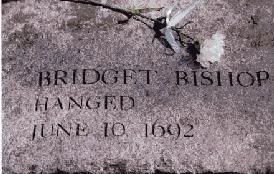
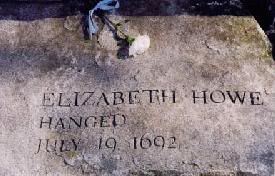
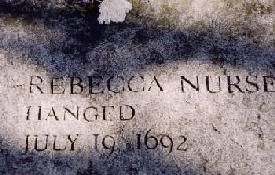

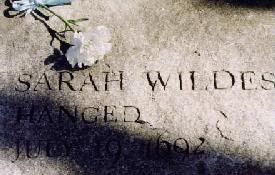
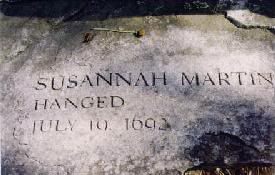 January 20
Nine-year-old Elizabeth Parris and eleven-year-old Abigail Williams began to exhibit strange behavior, such as blasphemous screaming, convulsive seizures, trance-like states and mysterious spells. Within a short time, several other Salem girls began to demonstrate similar behavior.
Mid-February
Unable to determine any physical cause for the symptoms and dreadful behavior, physicians concluded that the girls were under the influence of Satan.
Late February
Prayer services and community fasting were conducted by Reverend Samuel Parris in hopes of relieving the evil forces that plagued them. In an effort to expose the "witches", John Indian baked a witch cake made with rye meal and the afflicted girls' urine. This counter-magic was meant to reveal the identities of the "witches" to the afflicted girls.
Pressured to identify the source of their affliction, the girls named three women, including Tituba, Parris' Carib Indian slave, as witches. On February 29, warrants were issued for the arrests of Tituba, Sarah Good and Sarah Osborne.
Although Osborne and Good maintained innocence, Tituba confessed to seeing the devil who appeared to her "sometimes like a hog and sometimes like a great dog". What's more, Tituba testified that there was a conspiracy of witches at work in Salem.
March 1
Magistrates John Hathorne and Jonathan Corwin examined Tituba, Sarah Good, and Sarah Osborne in the meeting house in Salem Village. Tituba confessed to practicing witchcraft.
Over the next weeks, other townspeople came forward and testified that they, too, had been harmed by or had seen strange apparitions of some of the community members. As the witch hunt continued, accusations were made against many different people.
Frequently denounced were women whose behavior or economic circumstances were somehow disturbing to the social order and conventions of the time. Some of the accused had previous records of criminal activity, including witchcraft, but others were faithful churchgoers and people of high standing in the community.
March 12
Martha Corey is accused of witchcraft.
March 19
Rebecca Nurse was denounced as a witch.
March 21
Martha Corey was examined before Magistrates
Hathorne and Corwin.
March 24
Rebecca Nurse was examined before Magistrates Hathorne and Corwin.
March 28
Elizabeth Proctor was denounced as a witch.
April 3
Sarah Cloyce, Rebecca Nurse's sister, was accused of witchcraft.
April 11
Elizabeth Proctor and Sarah Cloyce were examined before Hathorne, Corwin, Deputy Governor Thomas Danforth, and Captain Samuel Sewall. During this examination, John Proctor was also accused and imprisoned.
April 19
Abigail Hobbs, Bridget Bishop, Giles Corey, and Mary Warren were examined. Only Abigail Hobbs confessed.
William Hobbs
"I can deny it to my dying day."
April 22
Nehemiah Abbott, William and Deliverance Hobbs, Edward and Sarah Bishop, Mary Easty, Mary Black, Sarah Wildes, and Mary English were examined before Hathorne and Corwin. Only Nehemiah Abbott was cleared of charges.
May 2
Sarah Morey, Lydia Dustin, Susannah Martin, and Dorcas Hoar were examined by Hathorne and Corwin.
Dorcas Hoar
"I will speak the truth as long as I live."
May 4
George Burroughs was arrested in Wells, Maine.
May 9
Burroughs was examined by Hathorne, Corwin, Sewall, and William Stoughton. One of the afflicted girls, Sarah Churchill, was also examined.
May 10
George Jacobs, Sr. and his granddaughter Margaret were examined before Hathorne and Corwin. Margaret confessed and testified that her grandfather and George Burroughs were both witches.
Sarah Osborne died in prison in Boston.
Margaret Jacobs
"... They told me if I would not confess I should be put down into the dungeon and would be hanged, but if I would confess I should save my life."
May 14
Increase Mather returned from England, bringing with him a new charter and the new governor, Sir William Phips.
May 18
Mary Easty was released from prison. Yet, due to the outcries and protests of her accusers, she was arrested a second time.
May 27
Governor Phips set up a special Court of Oyer and Terminer comprised of seven judges to try the witchcraft cases. Appointed were Lieutenant Governor William Stoughton, Nathaniel Saltonstall, Bartholomew Gedney, Peter Sergeant, Samuel Sewall, Wait Still Winthrop, John Richards, John Hathorne, and Jonathan Corwin.
These magistrates based their judgments and evaluations on various kinds of intangible evidence, including direct confessions, supernatural attributes (such as "witchmarks"), and reactions of the afflicted girls. Spectral evidence, based on the assumption that the Devil could assume the "specter" of an innocent person, was relied upon despite its controversial nature.
May 31
Martha Carrier, John Alden, Wilmott Redd, Elizabeth Howe, and Phillip English were examined before Hathorne, Corwin, and Gedney.
June 2
Initial session of the Court of Oyer and Terminer. Bridget Bishop was the first to be pronounced guilty of witchcraft and condemned to death.
Early June
Soon after Bridget Bishop's trial, Nathaniel Saltonstall resigned from the court, dissatisfied with its proceedings.
June 10
Bridget Bishop was hanged in Salem, the first official execution of the Salem witch trials.
Bridget Bishop
"I am no witch. I am innocent. I know nothing of it."
Following her death, accusations of witchcraft escalated, but the trials were not unopposed. Several townspeople signed petitions on behalf of accused people they believed to be innocent.
June 29-30
Rebecca Nurse, Susannah Martin, Sarah Wildes, Sarah Good and Elizabeth Howe were tried for witchcraft and condemned.
Rebecca Nurse
"Oh Lord, help me! It is false. I am clear. For my life now lies in your hands...."
Mid-July
In an effort to expose the witches afflicting his life, Joseph Ballard of nearby Andover enlisted the aid of the accusing girls of Salem. This action marked the beginning of the Andover witch hunt.
July 19
Rebecca Nurse, Susannah Martin, Elizabeth Howe, Sarah Good, and Sarah Wildes were executed.
Elizabeth Howe
"If it was the last moment I was to live, God knows I am innocent..."
Susannah Martin
"I have no hand in witchcraft."
August 2-6
George Jacobs, Sr., Martha Carrier, George Burroughs, John and Elizabeth Proctor, and John Willard were tried for witchcraft and condemned.
Martha Carrier
"...I am wronged. It is a shameful thing that you should mind these folks that are out of their wits."
August 19
George Jacobs, Sr., Martha Carrier, George Burroughs, John Proctor, and John Willard were hanged on Gallows Hill.
George Jacobs
"Because I am falsely accused. I never did it."
September 9
Martha Corey, Mary Easty, Alice Parker, Ann Pudeator, Dorcas Hoar, and Mary Bradbury were tried and condemned.
Mary Bradbury
"I do plead not guilty. I am wholly innocent of such wickedness."
September 17
Margaret Scott, Wilmott Redd, Samuel Wardwell, Mary Parker, Abigail Faulkner, Rebecca Eames, Mary Lacy, Ann Foster, and Abigail Hobbs were tried and condemned.
September 19
Giles Corey was pressed to death for refusing a trial.
September 21
Dorcas Hoar was the first of those pleading innocent to confess. Her execution was delayed.
September 22
Martha Corey, Margaret Scott, Mary Easty, Alice Parker, Ann Pudeator, Wilmott Redd, Samuel Wardwell, and Mary Parker were hanged.
October 8
After 20 people had been executed in the Salem witch hunt, Thomas Brattle wrote a letter criticizing the witchcraft trials. This letter had great impact on Governor Phips, who ordered that reliance on spectral and intangible evidence no longer be allowed in trials.
October 29
Governor Phips dissolved the Court of Oyer and Terminer.
November 25
The General Court of the colony created the Superior Court to try the remaining witchcraft cases which took place in May, 1693. This time no one was convicted.
Mary Easty
"...if it be possible no more innocent blood be shed...
...I am clear of this sin."
January 20
Nine-year-old Elizabeth Parris and eleven-year-old Abigail Williams began to exhibit strange behavior, such as blasphemous screaming, convulsive seizures, trance-like states and mysterious spells. Within a short time, several other Salem girls began to demonstrate similar behavior.
Mid-February
Unable to determine any physical cause for the symptoms and dreadful behavior, physicians concluded that the girls were under the influence of Satan.
Late February
Prayer services and community fasting were conducted by Reverend Samuel Parris in hopes of relieving the evil forces that plagued them. In an effort to expose the "witches", John Indian baked a witch cake made with rye meal and the afflicted girls' urine. This counter-magic was meant to reveal the identities of the "witches" to the afflicted girls.
Pressured to identify the source of their affliction, the girls named three women, including Tituba, Parris' Carib Indian slave, as witches. On February 29, warrants were issued for the arrests of Tituba, Sarah Good and Sarah Osborne.
Although Osborne and Good maintained innocence, Tituba confessed to seeing the devil who appeared to her "sometimes like a hog and sometimes like a great dog". What's more, Tituba testified that there was a conspiracy of witches at work in Salem.
March 1
Magistrates John Hathorne and Jonathan Corwin examined Tituba, Sarah Good, and Sarah Osborne in the meeting house in Salem Village. Tituba confessed to practicing witchcraft.
Over the next weeks, other townspeople came forward and testified that they, too, had been harmed by or had seen strange apparitions of some of the community members. As the witch hunt continued, accusations were made against many different people.
Frequently denounced were women whose behavior or economic circumstances were somehow disturbing to the social order and conventions of the time. Some of the accused had previous records of criminal activity, including witchcraft, but others were faithful churchgoers and people of high standing in the community.
March 12
Martha Corey is accused of witchcraft.
March 19
Rebecca Nurse was denounced as a witch.
March 21
Martha Corey was examined before Magistrates
Hathorne and Corwin.
March 24
Rebecca Nurse was examined before Magistrates Hathorne and Corwin.
March 28
Elizabeth Proctor was denounced as a witch.
April 3
Sarah Cloyce, Rebecca Nurse's sister, was accused of witchcraft.
April 11
Elizabeth Proctor and Sarah Cloyce were examined before Hathorne, Corwin, Deputy Governor Thomas Danforth, and Captain Samuel Sewall. During this examination, John Proctor was also accused and imprisoned.
April 19
Abigail Hobbs, Bridget Bishop, Giles Corey, and Mary Warren were examined. Only Abigail Hobbs confessed.
William Hobbs
"I can deny it to my dying day."
April 22
Nehemiah Abbott, William and Deliverance Hobbs, Edward and Sarah Bishop, Mary Easty, Mary Black, Sarah Wildes, and Mary English were examined before Hathorne and Corwin. Only Nehemiah Abbott was cleared of charges.
May 2
Sarah Morey, Lydia Dustin, Susannah Martin, and Dorcas Hoar were examined by Hathorne and Corwin.
Dorcas Hoar
"I will speak the truth as long as I live."
May 4
George Burroughs was arrested in Wells, Maine.
May 9
Burroughs was examined by Hathorne, Corwin, Sewall, and William Stoughton. One of the afflicted girls, Sarah Churchill, was also examined.
May 10
George Jacobs, Sr. and his granddaughter Margaret were examined before Hathorne and Corwin. Margaret confessed and testified that her grandfather and George Burroughs were both witches.
Sarah Osborne died in prison in Boston.
Margaret Jacobs
"... They told me if I would not confess I should be put down into the dungeon and would be hanged, but if I would confess I should save my life."
May 14
Increase Mather returned from England, bringing with him a new charter and the new governor, Sir William Phips.
May 18
Mary Easty was released from prison. Yet, due to the outcries and protests of her accusers, she was arrested a second time.
May 27
Governor Phips set up a special Court of Oyer and Terminer comprised of seven judges to try the witchcraft cases. Appointed were Lieutenant Governor William Stoughton, Nathaniel Saltonstall, Bartholomew Gedney, Peter Sergeant, Samuel Sewall, Wait Still Winthrop, John Richards, John Hathorne, and Jonathan Corwin.
These magistrates based their judgments and evaluations on various kinds of intangible evidence, including direct confessions, supernatural attributes (such as "witchmarks"), and reactions of the afflicted girls. Spectral evidence, based on the assumption that the Devil could assume the "specter" of an innocent person, was relied upon despite its controversial nature.
May 31
Martha Carrier, John Alden, Wilmott Redd, Elizabeth Howe, and Phillip English were examined before Hathorne, Corwin, and Gedney.
June 2
Initial session of the Court of Oyer and Terminer. Bridget Bishop was the first to be pronounced guilty of witchcraft and condemned to death.
Early June
Soon after Bridget Bishop's trial, Nathaniel Saltonstall resigned from the court, dissatisfied with its proceedings.
June 10
Bridget Bishop was hanged in Salem, the first official execution of the Salem witch trials.
Bridget Bishop
"I am no witch. I am innocent. I know nothing of it."
Following her death, accusations of witchcraft escalated, but the trials were not unopposed. Several townspeople signed petitions on behalf of accused people they believed to be innocent.
June 29-30
Rebecca Nurse, Susannah Martin, Sarah Wildes, Sarah Good and Elizabeth Howe were tried for witchcraft and condemned.
Rebecca Nurse
"Oh Lord, help me! It is false. I am clear. For my life now lies in your hands...."
Mid-July
In an effort to expose the witches afflicting his life, Joseph Ballard of nearby Andover enlisted the aid of the accusing girls of Salem. This action marked the beginning of the Andover witch hunt.
July 19
Rebecca Nurse, Susannah Martin, Elizabeth Howe, Sarah Good, and Sarah Wildes were executed.
Elizabeth Howe
"If it was the last moment I was to live, God knows I am innocent..."
Susannah Martin
"I have no hand in witchcraft."
August 2-6
George Jacobs, Sr., Martha Carrier, George Burroughs, John and Elizabeth Proctor, and John Willard were tried for witchcraft and condemned.
Martha Carrier
"...I am wronged. It is a shameful thing that you should mind these folks that are out of their wits."
August 19
George Jacobs, Sr., Martha Carrier, George Burroughs, John Proctor, and John Willard were hanged on Gallows Hill.
George Jacobs
"Because I am falsely accused. I never did it."
September 9
Martha Corey, Mary Easty, Alice Parker, Ann Pudeator, Dorcas Hoar, and Mary Bradbury were tried and condemned.
Mary Bradbury
"I do plead not guilty. I am wholly innocent of such wickedness."
September 17
Margaret Scott, Wilmott Redd, Samuel Wardwell, Mary Parker, Abigail Faulkner, Rebecca Eames, Mary Lacy, Ann Foster, and Abigail Hobbs were tried and condemned.
September 19
Giles Corey was pressed to death for refusing a trial.
September 21
Dorcas Hoar was the first of those pleading innocent to confess. Her execution was delayed.
September 22
Martha Corey, Margaret Scott, Mary Easty, Alice Parker, Ann Pudeator, Wilmott Redd, Samuel Wardwell, and Mary Parker were hanged.
October 8
After 20 people had been executed in the Salem witch hunt, Thomas Brattle wrote a letter criticizing the witchcraft trials. This letter had great impact on Governor Phips, who ordered that reliance on spectral and intangible evidence no longer be allowed in trials.
October 29
Governor Phips dissolved the Court of Oyer and Terminer.
November 25
The General Court of the colony created the Superior Court to try the remaining witchcraft cases which took place in May, 1693. This time no one was convicted.
Mary Easty
"...if it be possible no more innocent blood be shed...
...I am clear of this sin."